*
Who knows the formula to find out how much eletric baseboard is needed in a room of 700 sq. ft.????? I’m just a carpenter so type real slow.
Discussion Forum
Discussion Forum
Up Next
Video Shorts
Featured Story
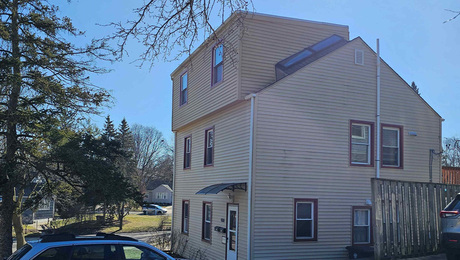
Listeners write in about greedy dormers and shop class and ask questions about steamy storm doors, fireplaces, and insulating a basement.
Featured Video
How to Install Exterior Window TrimHighlights
"I have learned so much thanks to the searchable articles on the FHB website. I can confidently say that I expect to be a life-long subscriber." - M.K.
Fine Homebuilding Magazine
- Home Group
- Antique Trader
- Arts & Crafts Homes
- Bank Note Reporter
- Cabin Life
- Cuisine at Home
- Fine Gardening
- Fine Woodworking
- Green Building Advisor
- Garden Gate
- Horticulture
- Keep Craft Alive
- Log Home Living
- Military Trader/Vehicles
- Numismatic News
- Numismaster
- Old Cars Weekly
- Old House Journal
- Period Homes
- Popular Woodworking
- Script
- ShopNotes
- Sports Collectors Digest
- Threads
- Timber Home Living
- Traditional Building
- Woodsmith
- World Coin News
- Writer's Digest

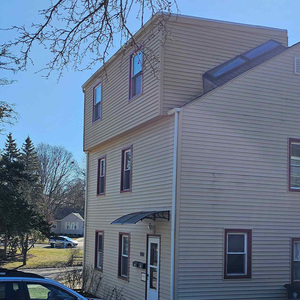
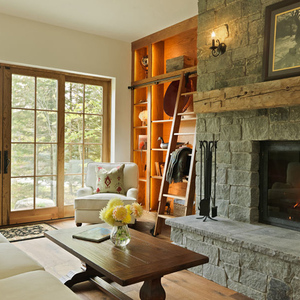
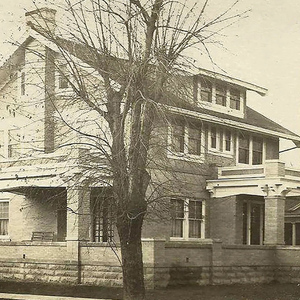
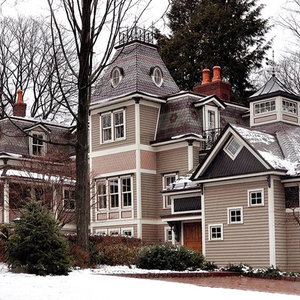







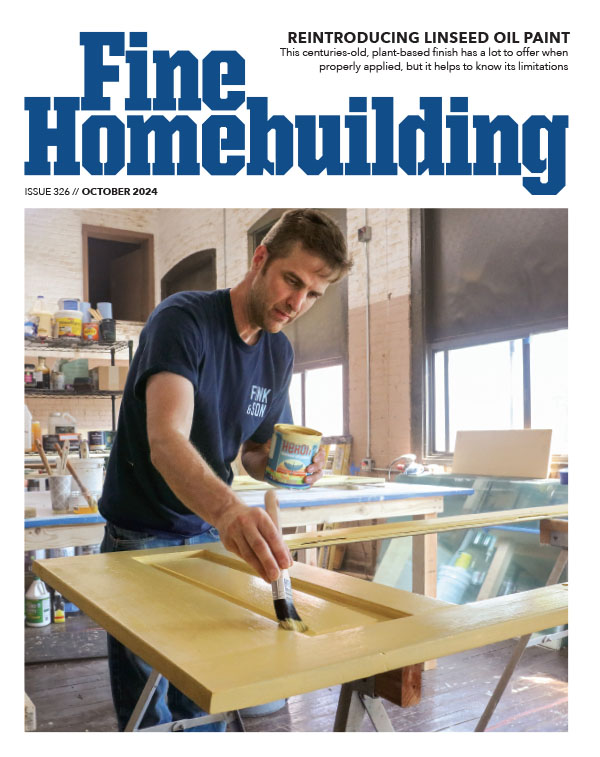





Replies
*
28'
*george.... those are pretty rough parameters..figure your heat loss in BTU's then divide by 3410 to get KWyou need the loss thru the floor plus the loss thru the wall.. the windows.. the doors.. and the ceiling.. the sunm of those losses is teh loss for teh room...divide by 3.410 and you will get watts....divide it up into available heating units and round up...
*Mike...what's with all the bandwidth use!?j
*aj..... huh ?do you know something i don't ?.. i just got bounced acouple times on my cable modem ....
*1' of 250W baseboard heats 25 sqft of space.All the rest is details...near rule of thumb stream,aj
*not if that's the 25 sf in front of an 8 picture window...and not if there's no insulation in the attic..and not if it's over a crawl space with no walls...not all 700 sf are created equal...some a dem are in georgia.. and some are in aj's back yard..b but hey, whadda i no ?
*Mike....worry not....trust me grasshopper...near the stream,aj
*One 6 ft sliding glass door , one 4x4 casement window, both on the only 2x4 insulated exterior wall. One 3'0' fire door from unheated hallway.Slab floor covered with carpet and padding. Other walls 2x4 abutting heated rooms. Ceiling is uninsulated truss joist below condo upstairs. Only half of my electric baseboard is working in the condo I live in. My brother is an electrician who will replace it tommorrow but I'm not going to replace half and leave the other half 30 yrs. old. I'm justing checking to see how much is needed under todays standards. Everything else in this place would make your head spin if you see how they did it 30 yrs. ago.(code violations, cut corners) Actually it doesn't surprise me because I remember how we use to build condos in the late 70's. Just really didn't care, get them up fast and start another. Different now that it's my name attached to the finished product.
*aj30x249 windows 4x5 a@ r22 doors @ r10r11 wallsr30 ceilingr19 floordelta -T 70 deg.14882 btu/3410 = 4.36 round up to 5 kw(5) 48 inch units = 20 ft...but george might have sometin else.....
*george.. the delta -t for the ceiling .. use 20 if the ceiling area is drafty use 40for the slab use 40.. for the common wall use 10.... i don't have your floor meas. and i forget wher you live...
*24x29. It's one big room with a peninsula kitchen in one corner of the square. Thirty miles above NYC.
*george... stickin my neck out...3.75 KWfigure 4000 watts installed or 16 ft.. (4) 48 inch units...so... someplace between 16 ft. and aj's rule of thumb of 28 ft...assumes r5 clg....r2 slabr11 wall.. r2 glass and r5 door with no correction (ADD ) for drafts....the big one is the ceiling .. 5600 btu of the 12800 total... if you can blow some insulation in there you'd be cozy.....
*I appreciate all the effort. This stuff is just a little beyond me. Ceiling is going to have to stay uninsulated. Condo rules and all. I'll let you know how warm I am next week. I hang a thermometer next to my thermostat now to get the true room tempeture. I have to keep thermostat at 85* to keep thermometer at a steady 63*. Right now the room contains 14 ft of old baseboard so by your calculations I'm underequipped already. Believe me , even when both worked it was never really warm in here. Thanks again.
*George, your power supplier may have a worksheet to calculate BTU needs for each room, as mine did. It listed R-factors for different materials, multipliers for floors/walls/ceiling, how to handle windows and doors, etc., so i was able to design my zones and figure baseboard lengths for each room. May be overkill for your project, but it was a neat exercise for me since i had no previous training, plus the results were very good.
*Thanks splinter I never thought of that. The only thing I ever get from them is a bill. For what I've been paying for years they should supply something.
*If they don't have what you need, i could check at Montana Power the next time i'm in town for another, or see if i can find my old worksheets. May not be in time for your present deal, but it's good info to have around, and easier to figure than tax forms.
*28'It's that simple...really.near the stream,aj700sqft=7000watts/250w/ft=28'guaranteed.
*Now, AJ, i came up with 10' of baseboard for a corner BR room with two windows, and 8' for an interior BR next door and the same size (10 x 15)with one window. With the doors closed, they stay about the same temp, unless it's very windy, when the corner room could use even more heat.Unless it's because the corner room is painted in cooler colors...? ;-)
*I size as you do...Take the rule of thumb and add or subtract with a little common sense. And there are more rules...Put heat on each exterior wall and under all windows...So you would put more heat in the end room logically without the need for Mike's Formulas. The other point you are not bringing up is thermostats...Electric heat is ussually controlled separately in each room...So if you close the doors and set the temp at 60 in both rooms, it will be so...Just remember that the more windows a room has the colder the room wil feel due to no heat coming back to the person from windows...Windows feel cold in warm rooms...Go stand by a sliding glass door on a cold night in a warm room.Thermostats will take care of any room that has too many feet of heat or not quite enough.The issue is more critical with hotwater baseboard...But here we generally put baseboard around the entire exterior wall that is available...There is more to it than that...butfor now, near the stream,aj28'...I stand by my first count and my first recount. Or you can do it Mikes' way...Mike...post your entire rule of thumb process on a sample 1 1/2 story open ceiling great room with insulation and specs as you build with 6000 heating degree days as in a cold climate.
*aj.. it's not a rule of thumb.. it's a heat loss calc..1/r x delta-T x area of section = btuheg: wall 2x4 with r11 batt (figure r11 ) wall is 8 ft high x 77 ft long (GROSS wall)less the glass & door (58 sf + 20 sf ) so the net wall is 538 sfso .. 1/11 x 70 deg x 538 = 3423 btuhdo the same for the glass, the door, the floor, and the ceiling.. add them up and divide by 3410 btu / 3410 = 1000watts (1 KW )but we ain't there so.. the actual R-values and the infiltration could make monkies out of the calcs..so i'll hedge.. somewhere's between the 16 ft... and the 28 ft you calc...the heaters you can size from any electrical catalogue... i chose 48 inch because they are 1000 watts each....even though george has one big room... he may want to go to two or more seperate thm'stats...for better control....now... if there is no insulation in the walls... then change the r-11 to say r3... brrrrrrrr!
*Mike,i btu / 3410 = watts you mean 1000watts or 1 kilowatt or 1KW...right?...you may still have edit time...When you edit, I'll ask you to list.. all your rules of thumb that would make it possible for me to easily calc the exmple I proposed we do...as a new E-thread.near the stream,aj
*aj.. it's only one rule...one formula..set up a work sheet... draw a schematic and label ita section of the room you're talking about..floor....walls (glass & doors )..ceiling...on the outside write the outside design temp..here it is 10 deg... but i always use zero...inside write the design temp... i use 70..if the wall abutts a tempered place like a garage or a closed porch.. i alter the outside temp.. ie: ... instead of 0 deg in a garage i figure 20 deg.and under a slab.. i figure the earth temp at 40 deg...and a basement , if it's outside the envelope .. i figure at 40 also...(unheated basement )then you have to know what the insulation level of the section is.... r-2 or r-3 for most windows (r-1 for single pane)....if it's a wall.. what are the spacing of the framing...the framing is (r = one to the inch.). and the insulation value is whatever the insulation mfr. or your personal experience says..if it's a regular 2x4 wall 16 inc oc.....10 % of the wall will be r-3.5 and the other 90% of the wall will be the value of the insulation.. lets use 3.5 to the inch for cellulose...so 3.5x3.5 = r-12... but since some of the wall is r-3.5 the total section is only r-11.. due to the thermal break at the framing...delta-T is 0 deg outside - 70 deg inside so delta-T for the wall, door , glass and ceiling is 70...the slab is 40 deg underneath and 70 inside so the floor delta -T is 30(in george's case the condo above is at 70 deg.. but the truss area is uninsulated and let's assume drafty.. so lets figure the temp in the ceiling is 40 so a delta-T of 30)then you do the calc for each section:the wall (net area) is the area of the wall minus the area of the glass and the area of the doors..if the room is cathedral ceiling , 24 x 24 the wall is 96 ft x 8ft high =768 sfand the glass is (8) windows each 4x5 = to 160 sfand there are (2) doors @ 20 sf each so net wall is (768) - (160+40) = 568 sfbtu loss for wall = (1/r x delta=T x area )(1/11 x 70 x 568 )= 3614 btuadd up the total loss and you have the loss for the room... but there is another loss.. you are changing the air.. either accidently, or with a air-to -air heat exchanger... or you are opening a window...we used to measure the lf . of crack (4x5 window had 18 ft. of crack and a 3x6/8 door had 20 ft of crack...now i just use 4 air changes an hour..so the volume of the room.. 8 ft walls 10 ft at the peak..5184 cfof air x 4 air changes = 20, 000 cf of air that has to be heated from 0 to 70.. and this is added to the loss of the sections for teh total design loss of the room..now ..i've forgotten how many btu's it takes to raise 20,000 cf of air from 0 to 70.. so .. maybe you could look that up.. and give us the constant so we can plug that in... it's right here in my notes .. but i'll be damned if i can find them...
*Of course they depend on the relative humidity but if I remember correctly you could use .2415 btu/lb/F as the specific heat and .724-.730 lb/cf as the density of air.
*so rick....(5184 cf x .725 lb/cf)= 3714 lb. air(3714 lb. x 3 air changes per hour) = 11,142 lb. air /hr(11,142 lb x .2415 btu/lb x 70 deg delta-T ) = 188,355 btuhis that right ?... is that the right constant or did i screw it up ?
*Mike...See why my 28' works so well!near the stream not needing a book of notes and twelve rocket scientists,aj
*aj... was you sandbaggin ?
*mike, density of air should be about .07 lb/cf - he was off by a factor of 10 in previous post. makes the number a little more believable. hope this helps. rich.
*.... rich ... i hate when someone slips a decimal point on me......how about dem apples ... aj ?let's try that again...so rick.... (5184 cf x .0725 lb/cf)= 371 lb. air (371 lb. x 3 air changes per hour) = 1,114 lb. air /hr (11,142 lb x .2415 btu/lb x 70 deg delta-T ) = 18,835 btuh is that right ?... not really... i just moved the decimal point.... but it's close enough
*Oops-sorry Mike!! .7lb/cf SEEMED heavy too! Wasn't thinking!
*Looks ok-now divide by 3.413 and you get near 5500 watts.Hat's off to you and AJ-both of you are DAMN GOOD!
*Mike...you owe me a revision with less fudge till ya get to the part where you normally bring out the fudge....patiently near the stream readying my new energy notebook,aj(so far it has lots of scratch outs!)
*More rules of thumb....go try to buy a boiler for residential use....they come 80,000btus in size and in one or two colors of blue or green.So put that in your average home...and it works...If the house is above average, put in two...even bigger,,,three. That's actually what is done even after all the scratchin on piles of sheets of paper.near the stream,ajAnd if ya just need a bit more even when your boiler runs all the time, then ya just go up in nozzle size...The same boiler will go up several thousands in btus...What else...
*working together ... we can do this......hah, hah, hah
*Well evarything is on hold for a while. My brother removed the thermostast from the wall and one wire was melted. Apparently one junction box for the two existing radiators feeds another recepticle in another wall. Everything is scabbed together and undersized or overburdened. What this means in sparky land I don't know cause I'm just a carpenter. Space heaters tonight until my bro returns tommorrow to start upgrading and rerouting wires properly. I shouldv'e expected this in a condo, apparently it was a close reality to a potential fire situation. Watched him all morning walking around saying he couldn't believe someone would do this as he found mistake after mistake. Guess all the free carpentry on his home is finally paying off.Thanks again.
*George,Your brother may not know what he is talking about....Most electric heat is installed by grouping enough rooms at the tstat so as to have 16 amps or so on one 20amp breakered circuit....So there would be a wire running off to another tstat....The melting may have to do with an overload as your brother may be assuming....or it may have been a loose connection...also, I bet the box was too small for the wires and the tstat.near the stream,ajYou may find roughly up to 14-15' of total baseboard on one breaker.
*
Who knows the formula to find out how much eletric baseboard is needed in a room of 700 sq. ft.????? I'm just a carpenter so type real slow.